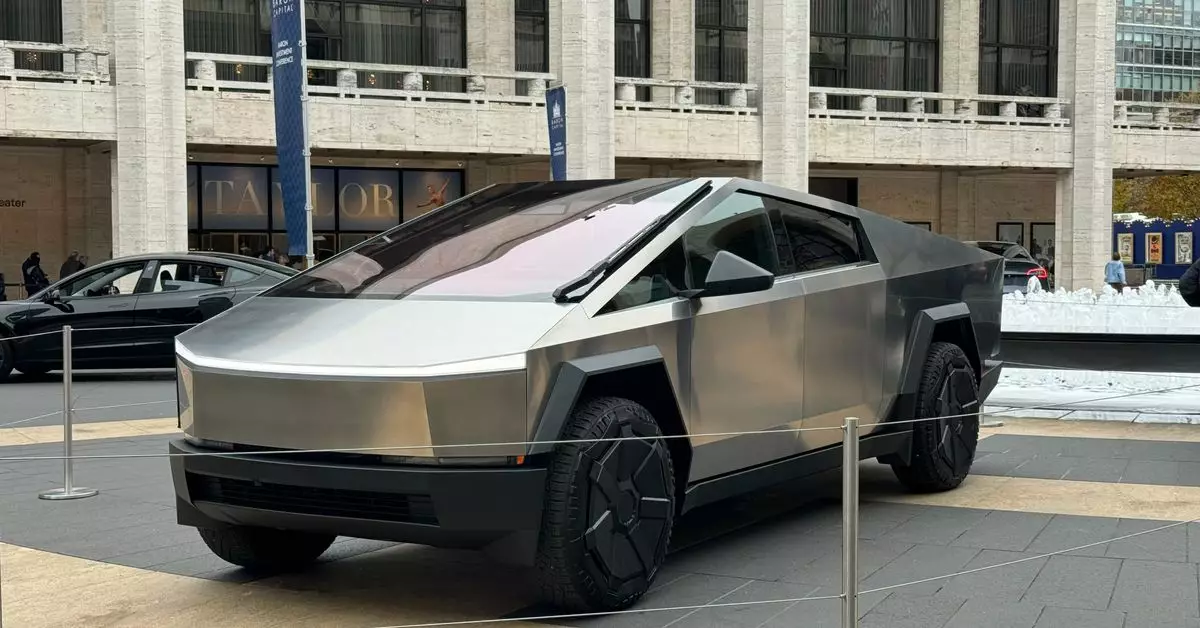As Tesla continues to push the envelope in electric vehicle technology, the recent updates regarding the Cybertruck’s Full Self-Driving (FSD) capabilities serve as both a point of excitement and skepticism among tech enthusiasts and everyday users alike. After a prolonged wait since its launch in November 2023, some Cybertruck owners have reported receiving FSD access, particularly those involved in Tesla’s early access program. This eagerly anticipated feature promises to enhance the vehicle’s functionality, but it is crucial to critically assess the implications and performance of this software upgrade.
The FSD Rollout and Driver Assistance Features
According to reports from members of the Cybertruck Owners Club, the latest FSD version, 12.5.5, follows Tesla’s promise to integrate this technology by September. The update aligns with the deployment of the Autopark feature, which aims to simplify parking for drivers. However, while the initial rollout might appear seamless, past experiences with Tesla’s FSD updates should prompt a closer examination of the feature’s reliability and safety implications.
Users who have begun testing the new software in their Cybertrucks note that while it operates similarly to other Tesla models, challenges remain. For instance, a test video showcased a scenario where the vehicle nearly collided with a median during an automatic left turn, necessitating intervention from the driver at a critical moment. This incident raises questions about the overall effectiveness of the driver assistance technologies and the dependability of relying on such automated systems, particularly in complex driving situations.
The FSD v12 update is touted for its use of “end-to-end neural nets,” relying solely on artificial intelligence and camera input without supplementary sensors. Such advancements may signify a leap toward achieving true autonomy in vehicular technology. Yet, the frequent need for driver intervention as observed in testing scenarios highlights the gap between Tesla’s aspirations and the current reality of their FSD program.
Moreover, discussions surrounding FSD often catalyze broader debates on safety, regulation, and the ethical implications of adopting such technologies. As the automotive industry witnesses rapid innovation, the stakes are undoubtedly high, not just for Tesla but for all players in the electric vehicle market. The introduction of features like vision-based attention monitoring for drivers wearing sunglasses shows promise, but can such innovations genuinely mitigate safety concerns as real-world scenarios unfold?
As Tesla prepares for a more comprehensive FSD v13 release scheduled for October, the focus will undoubtedly be on refining algorithms and addressing the shortcomings identified by early Cybertruck adopters. The path to achieving a fully autonomous vehicle is fraught with challenges, yet continuous user feedback will play a critical role in shaping the future of Tesla’s FSD technology.
While the Cybertruck’s FSD update represents a significant milestone for Tesla, it simultaneously invites scrutiny regarding the balance between innovation and reality. As drivers navigate the complexities of automated driving, ongoing discussions about safety, effectiveness, and the need for careful oversight will remain vital to fostering consumer trust in these groundbreaking technologies.

